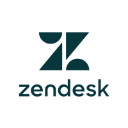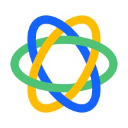The 13 best alternatives to Zoho CRM (and how to choose yours)
Customer relationship management is no longer just about sending polite reminders and ticking boxes on an XL spreadsheet. Today, we're talking about automation, scoring, AI and, above all, an ultra-personalised customer experience.
Zoho CRM ticks a lot of boxes, but it's not the only one on the market. And depending on your needs, your teams and your budget, other CRMs do things better. Or differently.
So if Zoho CRM seems too limited, too complex, or just not right for you, here are 13 solid, tried and tested alternatives. From HubSpot to Pipedrive, not forgetting Salesforce and Close, each tool has its own strengths and uses.
The aim is to help you choose THE CRM that really fits your business. The one that will align your teams, improve your sales and take your customer relations to the next level.
What is Zoho CRM?
Overview of Zoho CRM
Zoho CRM is customer relationship management software published by Zoho Corporation, an Indian company that has been firmly established in the B2B SaaS market since the 1990s (with over 90 million users worldwide).
Its positioning? A flexible, affordable CRM with a strong focus on sales automation, personalised customer journeys and artificial intelligence (Zia, its intelligent assistant).
Who is Zoho CRM aimed at?
- SMEs that want to structure their sales pipeline without blowing their budget;
- Sales and marketing teams looking to automate their processes;
- Growing businesses that need a scalable tool that can adapt to their pace.
Typical use cases:
- Tracking sales leads and opportunities;
- Automatic and predictive scoring;
- Intelligent contact segmentation;
- Analysis of marketing campaign performance;
- Synchronisation with the Zoho suite (Desk, Campaigns, Books, etc.) or other tools via API.
Customers include companies such as Amazon India, Hotstar and Suzuki, a sign that the software can also appeal to much larger organisations.
Key features of Zoho CRM
Zoho CRM has many strings to its bow. It's not just a dashboard for managing prospects, it's a real sales cockpit. Here are the features that make it so complete:
- Sales automation: creation of workflows, reminders, conditional tasks, everything is designed to save time... without forgetting anything.
- Lead scoring: AI (Zia) analyses the data to prioritise the hottest prospects.
- Multi-channel management: integration of emails, calls, social networks, live chat... to track all exchanges in the right place.
- Extensive customisation: fields, views, modules, pipelines... almost everything can be modified to suit your internal processes.
- Reporting and analytics: dynamic dashboards, customised reports, intelligent sales forecasts.
- Mobile CRM: high-performance application with geolocation of appointments, real-time updates and offline access.
- Native integrations: connection with the Zoho suite, but also with Google Workspace, Slack, Zapier, Mailchimp, etc.
Bonus: Zia, the intelligent assistant, learns from your actions to suggest times for sending emails, analyse the sentiment of messages, or forecast your sales results. Yes, it's pretty powerful stuff.

Zoho CRM
Advantages and disadvantages of Zoho CRM
No CRM is perfect, but some fare better than others. Here's what users like (or criticise) most about Zoho CRM, based on cross-reviews of Capterra, G2 and Software Advice.
✅ The benefits of Zoho CRM
- Excellent value for money: one of the most comprehensive CRMs in this price range, with a solid free version to get you started.
Highly modular: the tool can be adapted to almost any sector, thanks to its extensive customisation. - Advanced automation: workflows, intelligent scoring, triggered emailings... it's a real time-saver.
- Modern, intuitive interface (although it does take a little getting used to).
- Integrated Zoho ecosystem: Desk, Campaigns, Books, Creator... everything is interconnected.
❌ The disadvantages of Zoho CRM
- Learning curve can be steep, especially for those new to CRM.
- Uneven customer support, depending on feedback (long lead times during periods of high demand).
- Time-consuming customisation: powerful, yes... but you have to get your hands dirty.
- Limitations on certain third-party integrations, compared with giants like Salesforce or HubSpot.
If these drawbacks are stopping you from opting for Zoho CRM, then here are 13 alternatives that may be better suited to your CRM needs. ⤵️
Comparison table of the 13 best alternatives to Zoho CRM
Before delving into the details of each tool, here's a quick overview of Zoho CRM's main competitors. We compare their positioning, strengths and use cases to give you an initial idea of which tool might be right for you.
1 of 13
HubSpot CRM
Introducing HubSpot CRM
HubSpot CRM is the "ready-to-use" CRM for marketing and sales teams looking for efficiency without having to go through intensive configuration. Published by HubSpot, a major player in inbound marketing, it is designed to be quick to learn and easy to ramp up.
How is it positioned? A free CRM to start with, which is gradually upgraded according to your needs: sales automation, marketing automation, customer service management, CMS, etc. So we're talking about a genuine all-in-one hub.
Who's it for?
- VSEs/SMEs who want to get started quickly, with a simple, scalable tool.
- Sales and marketing teams looking to synchronise their efforts.
- Companies focusing on an inbound strategy: content, lead nurturing, conversion tunnel.
Typical use cases:
- Creating forms to capture leads and qualify them automatically;
- Sending personalised emails with integrated tracking;
- Automating sales tasks: reminders, follow-ups, transaction tracking, etc;
- Access to a 360° view of the customer, with centralised interactions and clear reporting.
HubSpot's customers include companies such as Atlassian, Casper and Doctolib in France.
Advantages and disadvantages of HubSpot CRM
✅ Advantages of HubSpot CRM
- Ultra-intuitive interface: everything is designed for the user, even without technical training.
- Very generous free version, perfect for getting started.
- Powerful automation (in the paid versions): nurturing, scoring, workflows.
- Native integration with all HubSpot tools, as well as Gmail, Outlook, Slack, Zapier, etc.
- Top-notch customer support and teaching resources (HubSpot Academy is a goldmine).
❌ The disadvantages of HubSpot CRM
- Prices rise quickly when you want to access advanced features.
- Limited customisation compared with a Zoho or Salesforce, especially in the free version.
- More advanced B2B functions reserved for paid plans (ABM, advanced lead scoring...).
👉 Verdict
HubSpot CRM is ideal for those who want a CRM that's beautiful, simple and effective, especially if you're banking on a content marketing strategy. But beware of the price increase as you go from strength to strength.

HubSpot CRM
Salesforce
Introducing Salesforce
Salesforce is the CRM of the big leagues. The world leader in its sector, it is aimed at companies that want to industrialise their customer relations on a large scale. We're talking about a modular tool that can be customised in the extreme, used by groups such as Schneider Electric, Engie and L'Oréal.
Its positioning? An ultra-complete cloud CRM, capable of covering sales, marketing, customer service, automation, AI, analytics... and even more thanks to the Salesforce AppExchange ecosystem.
Who's it for?
- Large companies and SMEs looking for a robust, ultra-modular CRM solution.
- International sales teams with complex, multi-level processes.
- Organisations that want to integrate CRM, ERP, AI and BI into a single platform.
Typical use cases:
- Management of strategic B2B accounts with a hierarchy of contacts;
- Automating complex sales cycles, with step-by-step validation;
- Integration with business tools (accounting, after-sales service, HR, etc.) via API;
- Predictive analysis with Einstein AI to anticipate customer needs.
Salesforce is not just a CRM, it's a nervous system for sales performance.
Advantages and disadvantages of Salesforce
✅ The advantages of Salesforce
- Ultra-powerful and customisable: each team can shape its own space.
- Salesforce AppExchange ecosystem: thousands of apps and business connectors.
- Advanced AI and analytics capabilities via Salesforce Einstein.
- Enterprise-level security and reliability (compliance, data, performance).
- Very good customer support and network of integrator partners.
❌ The disadvantages of Salesforce
- High prices, even on basic offerings.
- Long implementation time, often several weeks (or even months).
- Complex to use without training, especially if you don't have a dedicated administrator.
- Not suitable for small organisations, unless you have ambitions (and a budget).
👉 Verdict
Salesforce is the Rolls Royce of CRM, designed for companies that want to manage everything... but have to be prepared to invest time, money and energy in setting it up.

Salesforce Sales Cloud
Freshsales (Freshworks CRM)
Introducing Freshsales
Freshsales, developed by Freshworks, is a CRM focused on sales productivity, with an approach centred on automating repetitive tasks and intelligent lead qualification. Its credo is to offer a simple yet powerful CRM that saves your teams time.
It is positioned as an agile alternative to Zoho, with the emphasis on a fluid user experience, native AI integration and a highly competitive price/performance ratio.
Who should use it?
- Growing SMEs and start-ups who want a solution that can be deployed quickly.
- Sales teams who want to automate without adding complexity.
- Companies banking on a multi-channel approach to leads.
Typical use cases:
- Intelligent lead scoring based on engagement;
- Automating prospecting email sequences;
- Unified customer view with history, interactions, scoring and upcoming tasks;
- Drag & drop pipeline tracking, with real-time sales forecasts.
Freshsales is used by companies such as Tata Capital, Chargebee and Blue Nile.
Advantages and disadvantages of Freshsales
✅ The advantages of Freshsales
- Clear, modern interface that's a pleasure to use every day.
- Powerful automation: workflows, email sequences, scoring.
- Native AI (Freddy AI) for lead prioritisation and action recommendations.
- All-in-one offering with integrated sales, marketing and customer support modules.
- Competitive pricing, with a free version to get you started.
❌ The disadvantages of Freshsales
- Less functional depth than Salesforce or Zoho in some advanced cases.
- Marketplace of integrations more limited.
- English-language support, although the platform is translated into French.
👉 Verdict
Freshsales is an ideal alternative to Zoho CRM for modern sales teams who want a responsive, intelligent and frictionless CRM... especially if you're starting out on a reasonable budget.

Freshsales
Pipedrive
Introducing Pipedrive
Pipedrive is a CRM designed by salespeople, for salespeople. Its objective: to visualise, prioritise and move deals forward, all with a clear interface and simple actions.
The tool's pipeline-first philosophy and formidable efficiency in managing B2B sales cycles have won it over. It is aimed above all at teams who want to get straight to the point, without getting lost in superfluous functions.
Who should use it?
- Sales-oriented SMEs, especially in B2B.
- Sales teams managing simple or semi-complex processes.
- Managers who want clear monitoring of sales performance.
Typical use cases:
- Visual pipeline tracking with customisable columns;
- Creation of simple automations (emails, tasks, alerts);
- Synchronisation of emails, calls and meetings;
- Reporting on conversion rates, cycle times and performance by sales rep.
More than 100,000 companies worldwide use Pipedrive, including Fiverr, Amazon Logistics, and thousands of sales agencies.
Advantages and disadvantages of Pipedrive
✅ Advantages of Pipedrive
- Extremely simple: you can understand the tool in just a few minutes.
- Ultra-clear visualisation of opportunities in the pipeline.
- Easy to set up automations , without coding.
- Good value for money, with a smooth ramp-up.
- Well-stocked app marketplace (Slack, Gmail, Trello, Zapier...).
❌ Pipedrive's drawbacks
- Limited marketing functionality, even with add-ons.
- Less customisable than Zoho or Salesforce.
- Less suitable for managing complex or multi-level accounts.
👉 Verdict
Pipedrive is a perfect alternative to Zoho CRM if your priority is sales. Clear, fast and efficient, it does what it's told... and does it very well. A great ally for teams who want results without the headaches.

Pipedrive
Microsoft Dynamics 365
Introducing Microsoft Dynamics 365
Microsoft Dynamics 365 is more than just CRM. It is a complete modular suite that combines customer relationship management, ERP, marketing automation, customer service and data analysis in a single ecosystem.
Designed for complex organisations, Dynamics 365 is highly integrated with Microsoft 365, Power BI, Azure, Teams... and all the tools your teams are already using.
Who should use it?
- Large companies, SMEs and public sector organisations.
- Teams with complex or highly specific business processes.
- Sales, marketing and finance departments looking for an all-in-one tool connected to their IS.
Typical use cases:
- Sales CRM with advanced opportunity management and conditional workflows;
- Unification of customer and financial data for a 360° view;
- Multi-entity management (subsidiaries, geographical areas, BUs, etc.);
- Use of Microsoft AI (Copilot) to predict, recommend and automate.
Microsoft Dynamics 365 is used by giants such as Coca-Cola, Heathrow Airport and HP.
Advantages and disadvantages of Microsoft Dynamics 365
✅ Advantages of Dynamics 365
- All-in-one CRM + ERP solution, rare at this level.
- Powerful customisation via Power Platform and Azure.
- Excellent integration with the Microsoft environment.
- Highly advanced AI capabilities, via Copilot and Power BI.
- Natively integrated multi-entity and multi-language support.
❌ The disadvantages of Dynamics 365
- High complexity: internal resources or integrator partners are required.
- Unclear pricing, due to the modular model.
- Long deployment time: several months for full implementation.
- Not suitable for SMEs or start-ups, except in very specific cases.
👉 Verdict
Microsoft Dynamics 365 is a premium alternative to Zoho CRM for large companies, especially if your ecosystem already runs on Microsoft. It's powerful, ultra-connected, but demanding. It should be reserved for those who have the resources (human and financial) to exploit its full potential.

Microsoft Dynamics 365
Bitrix24
Introducing Bitrix24
Bitrix24 isn't just a CRM: it's an all-in-one business management platform that combines CRM, project management, internal messaging, collaborative intranet, customer support and more. You could almost say it's a cross between Zoho, Trello, Slack and Zendesk... all in one tool.
Its promise? To centralise all your company's activities in a single interface. All at a very competitive price - or even free for small teams.
Who's it for?
- VSEs and SMEs who want to avoid having to spread their tools too thinly.
- Organisations looking for a single solution for commercial AND collaborative management.
- Companies that work a lot in project mode or teleworking.
Typical use cases:
- Sales cycle management (lead → prospect → customer) with customisable pipeline;
- Tracking projects, tasks and deadlines directly in the CRM;
- Internal communication via chat, videoconferencing and activity feeds;
- Customer service with integrated call centre and support tickets.
Bitrix24 claims more than 12 million users, mainly in SMEs, particularly in Europe and Latin America.
Advantages and disadvantages of Bitrix24
✅ The advantages of Bitrix24
- Comprehensive free CRM with advanced business features right out of the box.
- Wide range of business features: project management, HR, support, etc.
- Integrated collaboration: ideal for hybrid or remote teams.
- Easy automation of sales and marketing tasks.
- Generous cloud storage even in the free version.
❌ The disadvantages of Bitrix24
- Dense and sometimes confusing interface, especially for new users.
- Too many tools kills the tool: you can quickly feel swamped by features.
- Rigid customisation on certain modules (shapes, views, etc.).
- Customer support could be improved, especially in French.
👉 Verdict
Bitrix24 is an interesting alternative to Zoho CRM if you're looking for a CRM that does it all. But be careful not to fall into the 'too much' syndrome. You need to know how to sort and configure to get the best out of it.

Bitrix24
Zendesk Sell (formerly Base CRM)
Introducing Zendesk
Zendesk was originally a champion of multi-channel customer service. But a few years ago, the publisher launched Zendesk Sell, a CRM brick dedicated to sales teams. The idea? To offer a CRM focused on sales productivity, while remaining connected to support teams via a single platform.
So it's a tool that's particularly well-suited to companies that want to align sales and customer service in a fluid, data-driven environment.
Who should use it?
- B2B sales teams, particularly in SaaS or services.
- Organisations where the link between support and sales is critical (upsell, retention, etc.).
- Companies already using Zendesk Support.
Typical use cases:
- Monitoring sales opportunities and the pipeline;
- Lead management with scoring and automatic assignment;
- Synchronisation of emails, calls, calendar and SMS in the CRM interface;
- Sales-support alignment via a unified customer file.
Zendesk is used by companies such as Airbnb, Uber, Netflix and Expedia.
Advantages and disadvantages of Zendesk Sell
✅ Advantages of Zendesk Sell
- Fluid, modern and mobile-first UX: everything is fast, uncluttered and responsive.
- Strong alignment between customer support and sales (shared data).
- Simplified pipeline tracking, with clear visibility of deal progress.
- Clear analytics, with a focus on individual salesperson performance.
- Rich integrations, particularly with Zendesk and G Suite apps.
❌ The disadvantages of Zendesk Sell
- Fewer marketing features than HubSpot or Zoho.
- Rather limited customisation on certain modules (workflows, views...).
- Advanced functionalities only in higher tiers.
- Very sales/service-oriented, less suited to marketing or project use.
👉 Verdict
Zendesk Sell is an effective alternative to Zoho CRM if your sales force is close to customer service. It shines in environments geared towards ongoing customer relations... but is a little lacking when it comes to marketing and personalisation.

Zendesk Sell
Creatio
Introducing Creatio
Creatio (formerly bpm'online) is a process- and automation-oriented CRM that combines sales management, marketing automation and customer service... with an ultra-advanced no-code/low-code approach.
Its DNA? Model your business processes, automate them, and make them evolve without coding. A real Swiss Army Knife for companies that want a CRM that's ultra-adapted to their internal needs, without having to rely on a developer for every change.
Who's it for?
- ETIs and large SMEs with complex workflows.
- Organisations that want an ultra-flexible, automatable CRM.
- Sales/marketing teams working closely together around the customer cycle.
Typical use cases:
- Automating personalised customer journeys;
- Configuration of sales processes with conditional steps;
- Fine segmentation of leads, nurturing, predictive scoring;
- Modelling of internal workflows via a no-code visual editor.
Creatio is particularly popular in the finance, insurance and professional services sectors.
Advantages and disadvantages of Creatio
✅ Advantages of Creatio
- No-code native: create and modify workflows without a line of code.
- CRM + BPM in a single tool, to model the entire customer chain.
- Highly customisable at every level (data, UX, process).
- Advanced automation functionalities, even in the mid-market.
- Highly rated customer support, with strong coaching.
❌ The disadvantages of Creatio
- Learning curve a little steep at first.
- Dense interface (but logical once you know the system).
- Rates a little high for small structures.
- Less well-known than the market giants, so fewer integrators and third-party resources.
👉 Verdict
Creatio is a premium alternative to Zoho CRM for companies that want an agile CRM that is 100% adapted to their processes. It's the choice of teams who like to be in control - without having to code.

Creatio
Keap
Introducing Keap
Keap is an American CRM designed for solopreneurs, freelancers, VSEs and small SMEs. Its favourite playground: sales and marketing automation, with a simple interface, ready-to-use templates and an all-in-one logic.
Behind this promise lies a tool that does much more than manage contacts: Keap enables you to capture leads, convert them and automatically follow them up, while managing your marketing campaigns, invoices and payments.
Who should use it?
- Solo entrepreneurs, coaches, consultants, freelancers.
- Small sales teams who want to automate easily.
- Companies that manage their acquisition by email or landing pages.
Typical use cases:
- Creation of landing pages with integrated forms;
- Automatic sending of follow-up emails, reminders and upsells;
- Customer appointment management with automated reminders;
- Integrated invoicing and payment tracking.
Keap is particularly popular with service companies, freelancers and the coaching/wellness/training sector.
Advantages and disadvantages of Keap
✅ The advantages of Keap
- Easy-to-implement, non-technical automation.
- All-in-one approach (CRM + marketing + payment).
- Practical pre-configured templates for a quick start.
- Excellent UX, designed for non-specialists.
- Reputable customer support, with personalised onboarding.
❌ The disadvantages of Keap
- Limited functionality for medium-sized businesses.
- Not well suited to complex or structured B2B sales cycles .
- Quite high prices for very small structures, especially if you want several users.
- Fewer native integrations than HubSpot or Zoho.
👉 Verdict
Keap is an ultra-accessible alternative to Zoho CRM for small organisations that want to automate without complicating matters. It's the CRM for freelancers in a hurry, who want "things to run themselves"... without spending evenings doing it.

Keap
Insightly
Introducing Insightly
Insightly is a cloud CRM that stands out for its ability to combine customer relations and project management in a single environment. It's not just a tool for selling, it's also a tool for delivering what you sell, with rigour and follow-up.
It is aimed primarily at SMEs that need to coordinate sales, operations and delivery - often in B2B services, consulting or engineering.
Who should use it?
- Service SMEs, especially those with client project management.
- Sales teams working closely with production or account management.
- Organisations that want a CRM + project management solution without multiplying the number of tools.
Typical use cases:
- Lead and opportunity management with interaction history;
- Monitoring customer projects (milestones, tasks, deliverables);
- Automated follow-up and nurturing;
- Dashboards by customer, project and team.
Insightly is used by more than 1.5 million users, notably in the IT, consulting, architecture and education sectors.
Advantages and disadvantages of Insightly
✅ The advantages of Insightly
- Native CRM + project management integration, rare at this level.
- Clear and intuitive interface, with no overload.
- Automation functions accessible even to non-techies.
- Customised reports and filtering by customer, project and status.
- Good integration with Google Workspace, Office 365, Mailchimp...
❌ The disadvantages of Insightly
- No advanced marketing features (nurturing, scoring, A/B tests...).
- Customisation sometimes limited compared to large CRMs.
- High prices as soon as you move upmarket, particularly for advanced reports.
- Less suitable for organisations with very complex processes.
👉 Verdict
Insightlyis a solid alternative to Zoho CRM for service companies that want to manage sales and projects in a single tool. Less marketing, more operational, it shines in contexts where the sale doesn't end with the signing of the quotation.

Insightly
LeadSquared
Introducing LeadSquared
LeadSquared is a fast-growing Indian CRM designed for companies that want to accelerate their lead generation while optimising their sales cycle. It is positioned halfway between a sales CRM and a marketing automation platform, with a strong focus on behavioural tracking.
The tool is particularly popular in sectors with a high volume of leads, such as education, healthcare, real estate and fintech.
Who should use it?
- Companies with a field or telephone sales force.
- Marketing teams managing multi-channel campaigns.
- Organisations that want accurate tracking of lead-to-sale conversion.
Typical use cases:
- Automatic scoring based on web behaviour;
- Advanced segmentation and targeted mailings;
- Dynamic lead allocation according to business rules;
- Tracking calls, emails, visits and site/app interactions.
LeadSquared is used by over 2,000 companies worldwide, including BYJU'S, UniAcco and Max Healthcare.
Advantages and disadvantages of LeadSquared
✅ Advantages
- Performance-oriented: good for teams that manage volume.
- Clear interface, with visual workflows for automation.
- Very granular tracking of lead interactions.
- Complete mobile CRM, ideal for teams in the field.
- Responsive and highly rated customer support.
❌ Drawbacks
- Not well suited to complex or multi-stakeholder sales cycles .
- Less customisation than Zoho or Salesforce.
- No real integrated project management.
- English-only interface (for now).
👉 Verdict
LeadSquared is an effective alternative to Zoho CRM for companies focused on conversion and marketing performance, especially if you have a large base of leads to qualify and follow up quickly.
Close
Introducing Close
Close is an American CRM designed specifically for inside sales teams. Its aim? Reduce the time spent entering information, and maximise the time spent selling. No marketing frills, no project management: everything here is geared towards sales action.
The tool stands out for its native integration of calls, text messages and emails, and its excellent lead database search engine.
Who should use it?
- Start-ups and scale-ups with a dedicated sales team.
- B2B companies that rely on intensive follow-up (cold calls, chain emails).
- Sales managers who want to measure activity in real time.
Typical use cases:
- Tracking activity by sales rep (calls, response rates, conversions);
- Automating email sequences and reminders in stages;
- Outbound calls directly from the CRM, with recording;
- Management of incoming leads with automatic sorting and distribution.
Close is widely used by American start-ups and SaaS companies such as ZoomShift, Kinsta and Buffer.
Advantages and disadvantages of Close
✅ Advantages
- Ultra-efficient for in-house sales teams.
- Native integration of calls, text messages and emails, without the need for plug-ins.
- Simple, high-performance pipeline view.
- Real-time reporting on sales performance.
- Fast, well-thought-out interface.
❌ Drawbacks
- Not suitable for companies with marketing or project management needs.
- No francization of the interface.
- Quite expensive as soon as you scale up.
- Advanced features only on higher plans.
👉 Verdict
Close is the ideal alternative to Zoho CRM if your business is telephone or email sales, in start-up or inside sales mode. It's light, responsive and distraction-free: this is selling, full stop.

Close CRM
Nutshell
Introducing Nutshell
Nutshell is an American CRM designed for SMEs that want a simple, collaborative, sales-oriented solution. It is positioned as an affordable alternative to the giants of the sector, without sacrificing functional quality.
Its strength? To offer a fluid experience, with a good level of customisation, without turning implementation into an obstacle course. And it does all this with much-appreciated customer support.
Who should use it?
- Small and medium-sized B2B sales teams.
- Companies that want to align marketing and sales, without overcomplicating things.
- Organisations looking for a clear CRM, with no compulsory training.
Typical use cases:
- Tracking opportunities in Kanban view;
- Sending automated, personalised emails;
- Synchronisation with Google Workspace, Outlook, Mailchimp and Slack;
- Reporting on conversions, sales cycles and active leads.
Used by companies such as Elevate, Mediafly and Whiteboard, Nutshell has established itself as an agile and reliable solution.
Advantages and disadvantages of Nutshell
✅ Advantages
- Easy to learn, even for beginners.
- Accessible and effective automation.
- Very good customer support (even on small plans).
- Good value for money.
- Clear and intuitive interface.
❌ Disadvantages
- Not well suited to organisations with very advanced needs.
- Lacks depth on some integrations.
- Basic marketing functionalities.
- English only.
👉 Verdict
Nutshell is a lightweight but robust alternative to Zoho CRM, perfect for teams who want to get straight to the point without drowning in options. Less flashy, but formidably effective.

Nutshell
Comparison table: focus on the features of the alternatives to Zoho CRM
| Software | Type of target user | Strengths | Key features | Entry price* (£) |
| HubSpot CRM | VSEs, SMEs, marketing teams | Easy to use, free version | Visual pipeline, emails, scoring, marketing automation | Free, then $20/month |
| Salesforce | SMEs, key accounts | Power, personalisation, AI | Full CRM, automation, AI Einstein, AppExchange ecosystem | 25/month |
| Freshsales | SMEs, scale-ups | UX, integrated AI, value for money | Lead scoring, visual pipeline, email sequences, mobile CRM | Free, then $15/month |
| Pipedrive | SMEs, B2B salespeople | Simple, clear pipeline | Drag & drop pipeline, automation, sales reporting | 14.90/month |
| Dynamics 365 | Large enterprises, public sector | Microsoft integration, CRM+ERP | Modular CRM, automation, Copilot AI, multi-entity | 65.50/month (Sales) |
| Bitrix24 | VERY SMALL BUSINESSES, SMES | All-in-one tool, CRM + collaboration | CRM, project management, internal chat, automation | Free, then €49/month |
| Zendesk Sell | B2B sales/support teams | Sales/support alignment, mobile-first | Pipeline, integrated calls/SMS/emails, sales analytics | 19/month |
| Creatio | SMEs, regulated sectors | No-code, advanced personalisation | CRM + BPM, automation, lead nurturing, visual reporting | On quotation |
| Keap | Self-employed, VSEs | Simple, all-in-one automation | CRM, landing pages, reminders, invoicing, appointments | 159/month |
| Insightly | SME services | CRM + project, intuitive UX | Pipeline, project management, reporting, automation | 29/month |
| LeadSquared | SMEs with a high volume of leads | Marketing + sales, behavioural scoring | CRM, nurturing, mobile CRM, lead distribution, reporting | 25/month |
| Close | Start-ups, inside sales | Sales productivity, rapid follow-up | Emails, calls, sequences, real-time reporting | 49/month |
| Nutshell | SME B2B | Simplicity, customer support | Pipeline, automation, email tracking, reporting | 16/month |
* Indicative prices in August 2025, excluding promotions, based on standard entry plan (per user/month).
How do you choose your CRM software?
Choosing a CRM is not just a matter of price or design. It is above all a question of alignment with your business objectives, your organisation and your sales cycles. Here are the main criteria to consider if you want to avoid making a mistake (or spending your weekends doing so).
1. Your business objectives
Ask yourself this simple question: what do you want from your CRM?
- If it's to acquire more leads, turn to marketing-oriented tools like HubSpot or LeadSquared.
- If it's optimising the performance of your sales force, think Close, Pipedrive or Freshsales.
- If you're looking to manage complex processes, Salesforce, Dynamics 365 or Creatio are more suitable.
- And if you're looking for a versatile, collaborative tool, look no further than Zoho CRM, Bitrix24 or Insightly.
2. The size and maturity of your company
- VSE or freelance? Go for CRM tools that are quick and easy to learn, such as Keap, Nutshell or HubSpot (free version).
- Growing SME? Opt for a modular, scalable CRM like Zoho CRM, Freshsales or Insightly.
- Large accounts or complex organisations? Go for a large-scale customisable tool like Salesforce or Microsoft Dynamics 365.
3. Your business processes
A good CRM is one that adapts to the way you work, not the other way round. Check:
- Pipeline management: simple or multi-stage?
- User roles: sales only or sales + support + marketing?
- The need for customisation: standard or specific to your business?
- Mobility: are your sales people often out in the field?
4. Budget (and hidden costs)
A €15/month CRM can be more expensive than a €50/month CRM... if you have to add 6 plugins, 2 consultants and 10 hours of training.
- Evaluate the total cost: licence, integrations, support, training.
- Beware of limitations in the free version or pricing tiers.
5. The ecosystem and integrations
Your CRM should not live in a silo. It must speak the language of your other tools (marketing, finance, support, emailing, etc.).
- Check native integrations (Gmail, Outlook, Zapier, Slack, etc.).
- For Microsoft users: Dynamics 365 is unbeatable when it comes to integration.
- For Google ecosystems: HubSpot, Pipedrive or Insightly do very well.
Conclusion
Zoho CRM is a benchmark... and for good reason. But it is not the universal CRM. Depending on your priorities, your size or your sales approach, other solutions may do better, or simply be more suitable.
Whether you're looking for a simple tool to sell faster (Pipedrive, Close), a complete platform to centralise everything (HubSpot, Bitrix24), or an ultra-customisable CRM to drive business processes (Salesforce, Creatio, Dynamics 365), the alternative exists.
👉 Our advice?
List your real needs, try out a few tools (most offer trial versions), and choose the one that makes your life easier, not more complicated.
And if you're still hesitating, Appvizer is there to compare, filter and find the right CRM in just 3 clicks. We don't sign the contracts for you, but almost.
Article translated from French